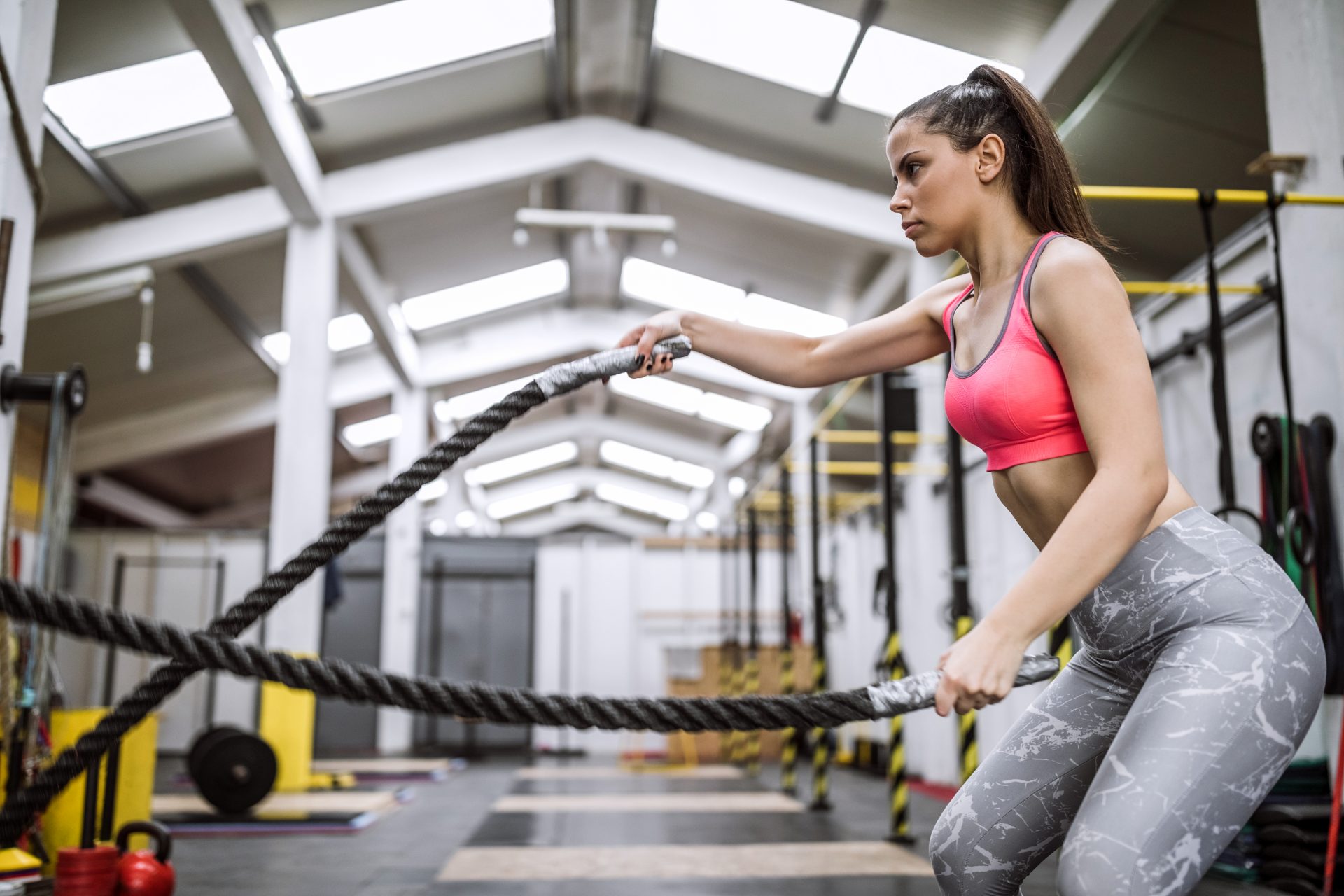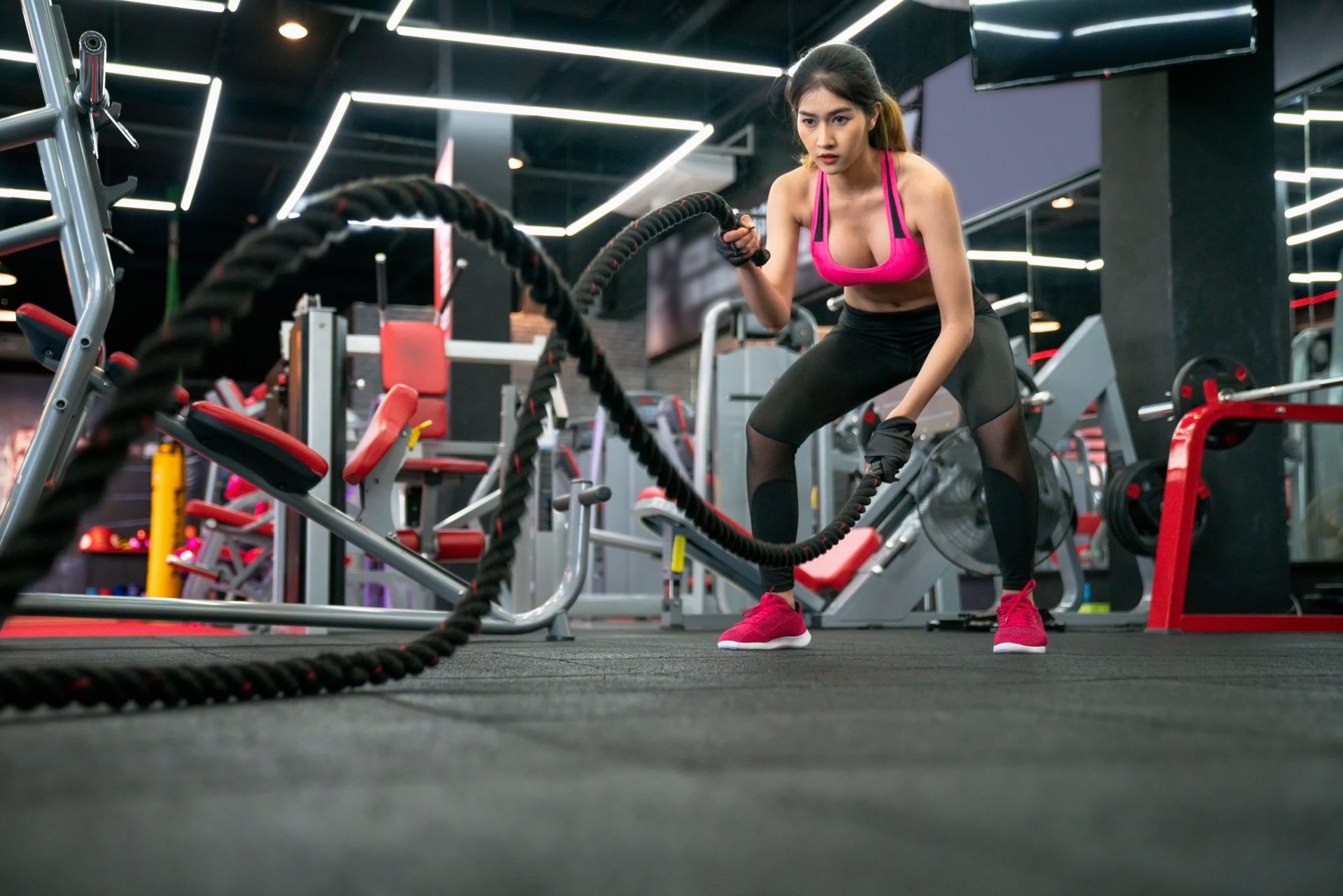Get to grips with how to use battle ropes, along with expert tips and workouts, for a double hit of strength and cardio.
In 2020, with gyms closed around the nation, high intensity interval training (HIIT) saw a resurgence, as many of us flocked to YouTube to put in a few solid minutes of some seriously hard work.
If you’re one of them, and looking forward to a return to gyms this month, you may be wondering what options lie on the gym floor that’ll allow you to hit it the same way. While you can certainly formulate your own HIIT programme from a combination of different pieces of equipment, there’s one particular bit of gear you should know about: Battle ropes.
You may also like
How to safely return to strength training and avoid injury
These thick, heavy ropes, also known as exercise ropes or muscle ropes, aren’t just for the CrossFit-inclined. They’re a great way of getting some high intensity into your workouts.
“Battle ropes form a core part of conditioning exercises with the aim to strengthen your full body including your arms, core, back, glutes and shoulders,” says personal trainer Eni Adeyemo. “I add them into my workout to raise my heart rate and keep things exciting!”
“I personally love them too,” adds Ruth Stone, personal trainer and spokesperson for Sweatband.com. “They’re so versatile, allowing you to work the whole body as well as target specific muscle groups. Because they’re heavy, you can really build strength with them but, because they also need retained tension when you use them, they require speed as well as strength.”

If you’ve never used them before, start small and build up slowly. And of course, if you have pre-existing back or shoulder issues, avoid using them without expert supervision.
“You may find them pretty tiring because there’s so much upper body movement,” says Ruth, “unlike other HIIT exercises which typically involve more leg movement.”
The all-important first step is to get your form right: Stand straight, facing where the rope is anchored, with your feet shoulder-width apart and your knees slightly bent. Ensure your palms are facing inwards.
You may also like
TRX exercises: 6 TRX exercises to strengthen your body from every angle
“When you visualise battle ropes being used, you typically see someone standing with one rope held, handshake-style, in each hand making waves,” says Ruth.
“This is a great exercise, but you can also hold them overhead and use them while jumping, lunging, sitting, kneeling and lying, as well as making different shapes and following different paths with your arms to strengthen pretty much every part of your body.”
Here are 4 of the best exercises to try out on their own, or include them as a station in a HIIT circuit, metabolic conditioning programme or Tabata-style training.

For a full-body workout: Alternating Waves
Stand with your feet hip-distance apart and knees slightly bent, holding the ends of the battle rope like a handshake. Create alternating waves down the full length of the ropes by lifting and lowering your arms vertically – when one goes up the other goes down.
Keep your body and legs as still and stable as possible.
For shoulders, chest and back: Kneeling snakes
Kneel with your knees hip-distance apart. Hold the ends of the battle rope in an overhand grip (knuckles facing inward) and bend your arms to a right angle.
Create snakes (horizontal waves) along the full length of the ropes by pulling the elbows back and out at the same time.
You may also like
The two glute stretches you should do after every leg day
For back, legs and shoulders: Side jump double waves
Start with your feet hip-distance apart and jump side to side, using the momentum when you land, to send a double wave down the full length of the battle ropes.
For core, chest and shoulders: Russian twists
Sit with one end of the battle rope in both hands, holding like a firefighter holds a hose. Lift your legs and bend your knees, then alternate taking the knees one way and hands the other. Try to get the wave to the end of the rope.
Halfway through the set, switch which hand is closest to the body.
Don’t forget to cool down and stretch after!
Follow @StrongWomenUK on Instagram for the latest workouts, delicious recipes and motivation from your favourite fitness experts.
Images: Getty
Source: Read Full Article
